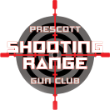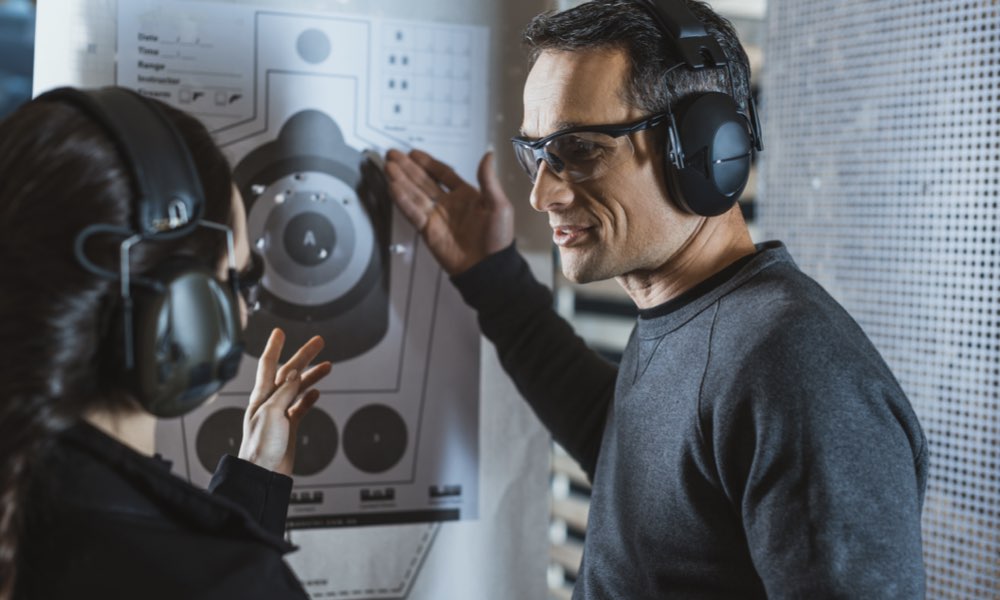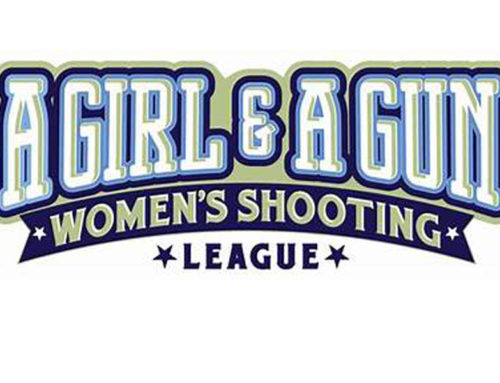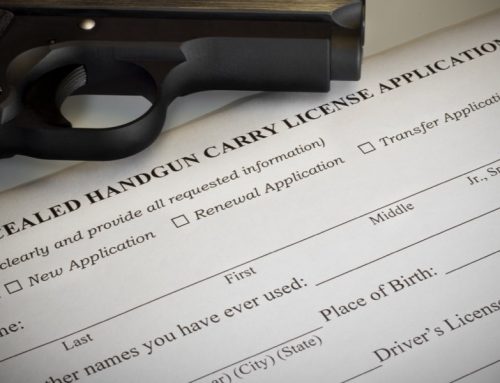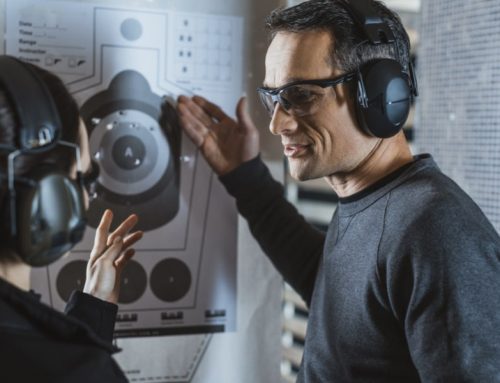Are you looking to improve your shooting skills and improve the quality of your range time? Then check out PSR’s Drill Nite, a fast-paced 1-hour training session that builds on the skills already possessed by the student. This is not an instructional course; it is designed to enhance the accuracy and speed of the student for combat shooting situations through a series of practical shooting drills that the FBI, military, SWAT, Federal Air Marshalls and other government agencies use to refine the shooting skills of their officers and personnel. The drills require approximately 100 rounds of ammunition; the student MUST BE COMPETENT in firearm safety, holster draw, and general firearm manipulations.
On Drill Night, at least one of the following drills will be run. There is no classroom time and minimal instruction; the instructor will usually just describe the drill and demonstrate it, although some instruction may be given for some of the drills. Shooters must be reasonably experienced; these drills are not designed for beginning-level shooters. Shooters must have:
- A reliable handgun suitable for defensive use, and with which the shooter is familiar
- At least two magazines, or two moon clips or speed loaders for revolver shooters
- An outside-the-waistband holster suitable for daily open or concealed carry; must be able to re-holster one-handed and the holster must completely cover the trigger guard; NOT ALLOWED are inside-the-waistband, soft fabric, appendix, Blackhawk Serpa, small-of-the-back, cross-draw, shoulder or deep-concealment holsters i.e. flash bangs
- A sturdy gun belt that supports the weight of your loaded gun
- A spare magazine or speed loader pouch
- At least 50 rounds of ammunition, although this will depend on the drill and the number of shooters
- Ear and eye protection (foam earplugs are insufficient for the range)
- A baseball cap to deflect flying shell casings
PREREQUISITES:
We always strive to provide the highest-quality training in our classes. Therefore, students must meet the following requirements for the enjoyment and safety of all participants. This class requires holster draw proficiency. If you have not taken a SkillBuilder class in the last year, call to schedule a 15-minute holster draw assessment and holster approval. The assessment is free to members. Non-members pay a $20 range fee, which allows them to shoot the rest of the hour after the assessment. AFTER VETTING, you are welcome to enroll in the class.
All students must use a strong-side, OUTSIDE-the-waistband (OWB) leather or kydex belt holster that fits and retains your handgun and COMPLETELY covers the trigger guard (ABSOLUTELY NO inside-the-waistband, soft fabric, appendix, Blackhawk Serpa, small-of-the-back, cross-draw, shoulder or deep-concealment holsters i.e. flash bangs).
The scheduled drill which will be run will be advertised ahead of time. If all shooters excel at three iterations of the scheduled drill, the instructor may change to a different drill depending on input from the shooters.
Bill Drill – From the holster, target at seven yards, six rounds center mass. A standard IPSC target is used; only A-zone hits count. If using a standard IDPA or USPSA target and IDPA scoring (B/C-zone or -0 zone hit adds +1 second to the time, D-zone or +3 zone hit adds +3 seconds to the time; a complete miss adds +5 seconds). For newer shooters, five or six seconds is a reasonable time. Accomplished shooters do four seconds. A master-class shooter do it in under two seconds. This deceptively simple drill requires consistent smooth, fast holster draw, a good grip to control recoil, good focus on the front sight, and good trigger control. It should be mastered before moving on to more complicated drills.
Mozambique Drill – This is similar to the Bill Drill in that it is run from the holster and the target is at seven yards, but it is a three-shot drill: two rounds center mass and one round to the head. A good shooter should be able to achieve a time of under four seconds. Like the Bill Drill, this drill requires solid fundamentals and also requires transitioning from one aiming point to another.
El Presidente Drill – This should only be attempted by shooters who have demonstrated safe gun handling and mastered the Bill Drill. Three targets — placed at 7-10 yards depending on the shooter’s skill — are separated by 1 yard (this may vary upon range setup). Shooter starts with theirback to the targets with gun holstered, one round in the chamber and five in the mag for six rounds total. The shooter has a spare mag with at least six rounds. At the signal, the shooter turns towards the targets then draws the handgun; for this reason the shooter must have demonstrated safe gun handling since the shooter must draw only after completely facing safely downrange! Two rounds are fired into each target, then an emergency reload is performed and fires two more rounds into each target, going in the opposite direction. The commonly accepted “par time” is 10 seconds; it may take practice for more novice shooters to achieve. This drill requires not only solid fundamentals, but also the ability to reload quickly, to transition between targets, and to move (or at least turn in place).
Find the Threat – This drill presents the shooter with three photo-realistic targets at a range of ten yards, initially facing away from the shooter. Only one target is a “threat” target; the others represent innocent bystanders. When the targets turn to face the shooter, he/she will draw from the holster (we encourage drawing from concealment to represent a typical concealed-carry situation), identify the threat, and deliver incapacitating hits (either two hits to the torso or one hit to the central nervous system). Photo-realistic targets don’t have scoring zones, so a “solid hit” is up to the instructor. If the shooter fails to deliver incapacitating hits, or places any hit on a non-threat target, the attempt is judged a failure. A time of three seconds is desirable but may take some practice. A variety of threat and non-threat targets are used, and some of the threat targets look similar to no-threat targets to minimize memorization of threat targets. Those not actively shooting will turn away so they don’t see the targets; the shooter will view the results with the targets facing away from non-shooters.
Immediate Action Drill – This drill represents a stoppage that must be corrected to engage the threat. Shooter starts with a holstered gun with an empty chamber and a loaded magazine inserted. A standard IDPA or USPSA target is used at seven yards. At the signal, the shooter draws and attempts to shoot center mass. Since no round is chambered, the shooter performs an immediate action drill (tap, tilt, rack, assess) then fires two rounds center mass. Time penalties are applied; a time of five seconds should be the eventual goal.
Emergency Reload Drill – This drill is run using a standard IDPA or USPSA target at seven yards. Shooter starts with a holstered handgun with one round in the chamber, an empty magazine inserted, and a spare loaded magazine. At the signal, the shooter will draw and fire two rounds center mass; this will of course require an emergency reload. The same time penalties are applied as for the Bill Drill; a time of five seconds should be the eventual goal.
Survival – This drill adds several complexities which represent sound tactics to survive a violent encounter. It uses a blue ATF target at three, five, seven, or ten yards depending on the shooter’s experience level and desired training range. It is encouraged to shoot this drill from concealment. The target is initially facing away from the shooter. When the target turns to face the shooter, the shooter “gets off the X” while drawing and fires any number of shots to either center mass or head. The target will face the shooter for a limited time; two to five seconds depending on the range and the shooter’s experience level. After the target has turned away, the shooter must “follow the target down” (aim at the base of the angled back wall for about two seconds), scan from one end of the back wall to the other from the high compressed ready position, then safely re-holster. To “survive” the encounter, the shooter must achieve either two solid hits in the light-blue area or one solid hit in the white.
Retention Drill – Approximately 70% of violent encounters in which a firearm is used in lawful self-defense occur at a range of 0-2 yards. At this range, it is important to retain one’s firearm to prevent it being knocked aside or grabbed. The instructor will teach and demonstrate proper retention shooting, and students will perform the drill initially from the retention position and then from the holster. The target is placed at arm’s length for the shooter, or optionally at a distance of 1 yard as measured from the shooter’s chest. At the command “threat,” the shooter will draw to the retention position and fire two rounds center mass. A “blue target” (ATF target) is used, and hits must be in the light blue or white areas. A time of two seconds should be the eventual goal.
Dot Drill – This is not be confused with the infamous “Dot Torture Drill” which requires 50 rounds. This is not a timed drill, and is not “tactical” in any sense, but it teaches proper trigger control which is critical for success in timed tactical drills. The target is an array of one-inch black dots at a range of three yards. Using slow and careful fire, the shooter places one round in each of six dots. With practice, the shooter should be able to hit all six dots.
